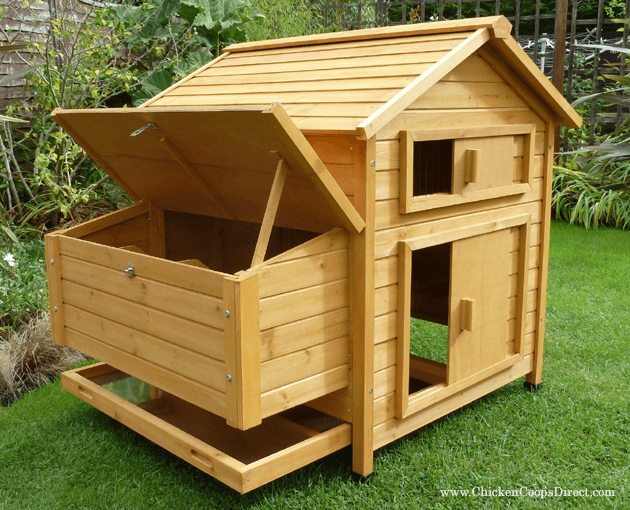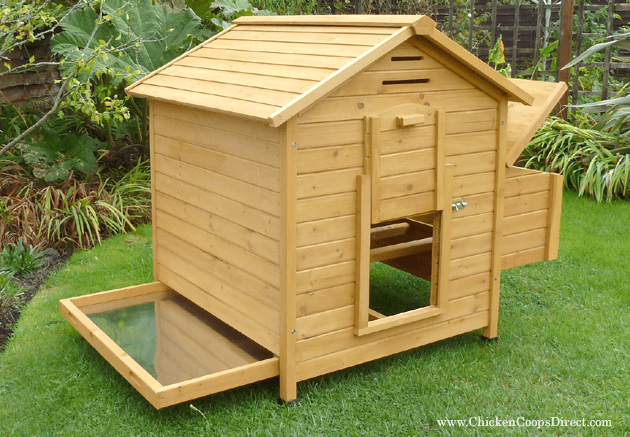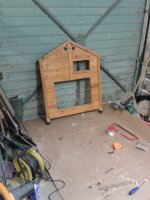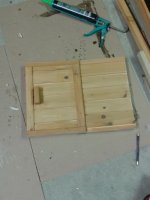ColinB
New member
My new coop arrived this morning, a Devon model from Chicken Coops Direct (Clickety -click). A shade on the flimsy side - not that I've got anything to judge it against, but the things I build do tend to be over engineered. I'm a little concerned over the lack of ventilation. There are the two thin slits above the pop-hole, and a sliding panel on the back which seems to be a bit low down. However, the ridge piece along the top ot the coop is separate, so I might just raise that by ¼" before screwing it in place to give extra ventilation at the highest point of the coop.
The sliding panel at the bottom of the back wall isn't anything like big enough to enable a good internal clean (unless you're a gynecologist) but the nesting box unit is removeable to leave a large hole, and the bottom tray slides out. That should be enough. I'm going to mount the fixing bolts with their heads inside the coop and get some butterfly nuts on the outside so - if need be - I can remove the whole of the rear wall.
I've assembled a few pieces and put a good coat of yacht varnish over the inside walls making sure that the joins between the T&G and all the other wooden joins are full. Hopefully this will reduce the areas for the red mites to congregate.
A few piccies of bits of wood.....more to follow.


The sliding panel at the bottom of the back wall isn't anything like big enough to enable a good internal clean (unless you're a gynecologist) but the nesting box unit is removeable to leave a large hole, and the bottom tray slides out. That should be enough. I'm going to mount the fixing bolts with their heads inside the coop and get some butterfly nuts on the outside so - if need be - I can remove the whole of the rear wall.
I've assembled a few pieces and put a good coat of yacht varnish over the inside walls making sure that the joins between the T&G and all the other wooden joins are full. Hopefully this will reduce the areas for the red mites to congregate.
A few piccies of bits of wood.....more to follow.










